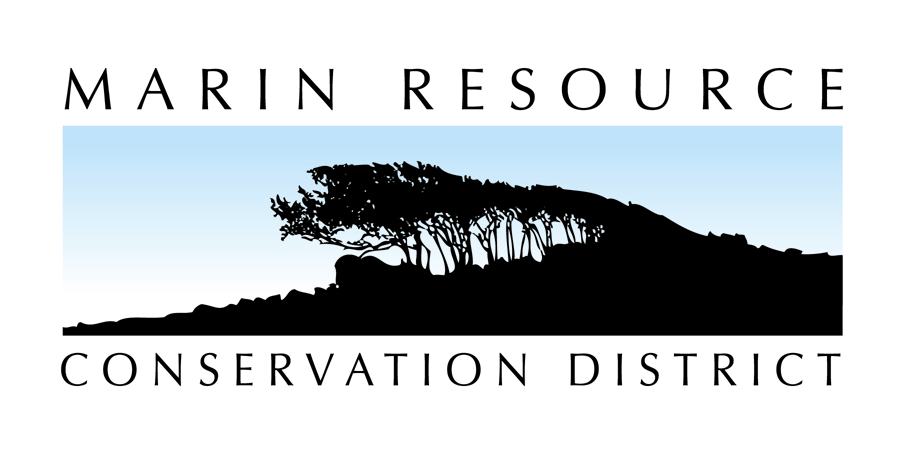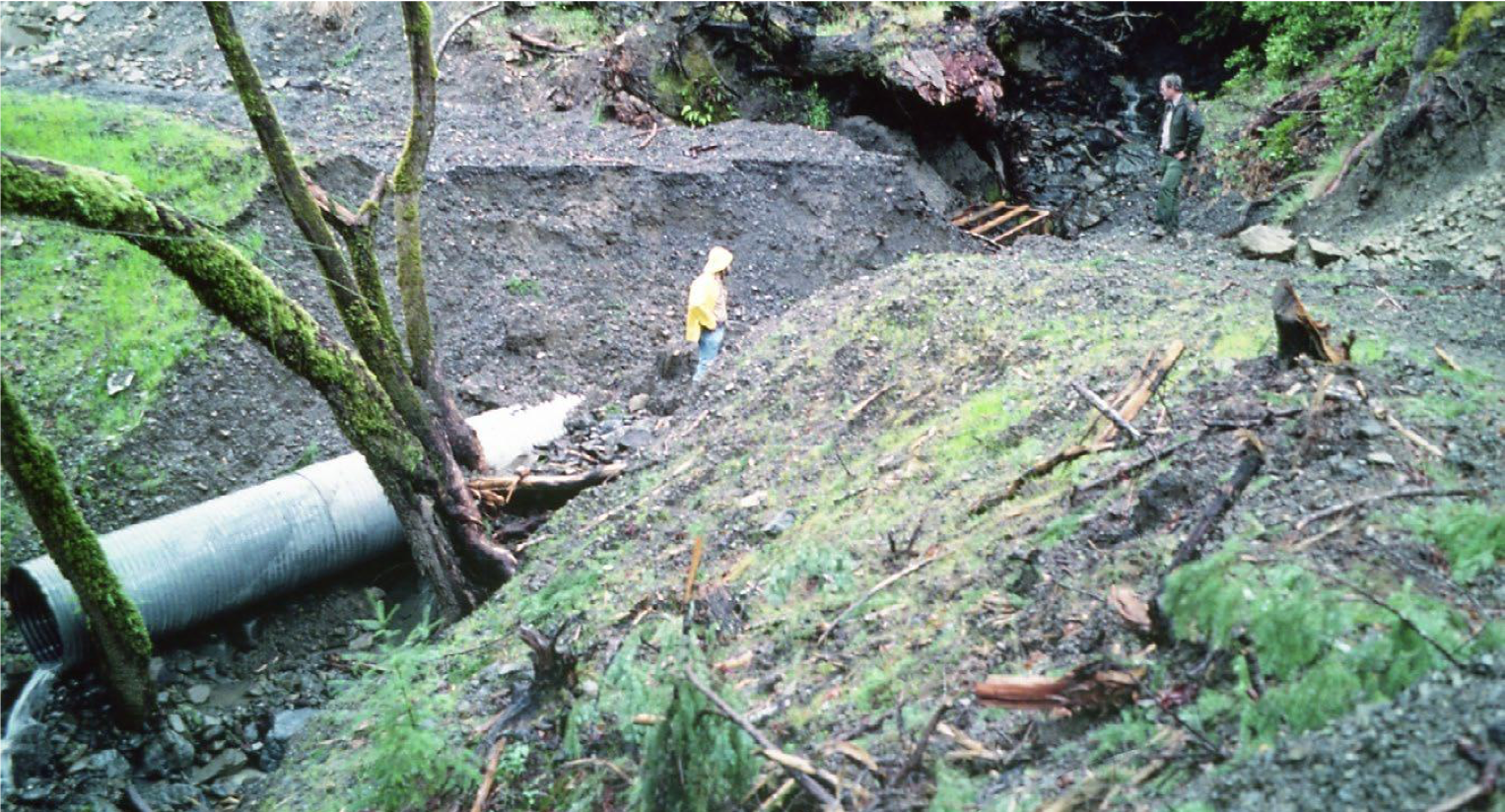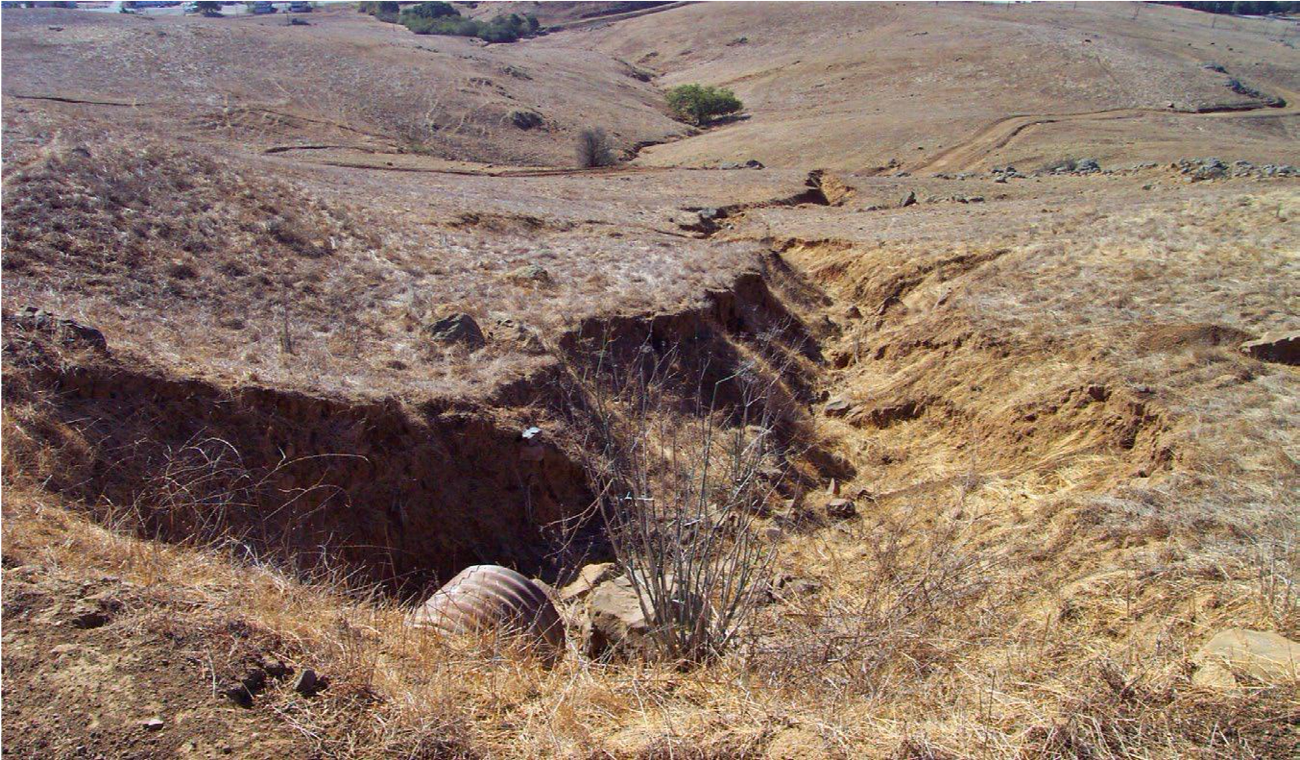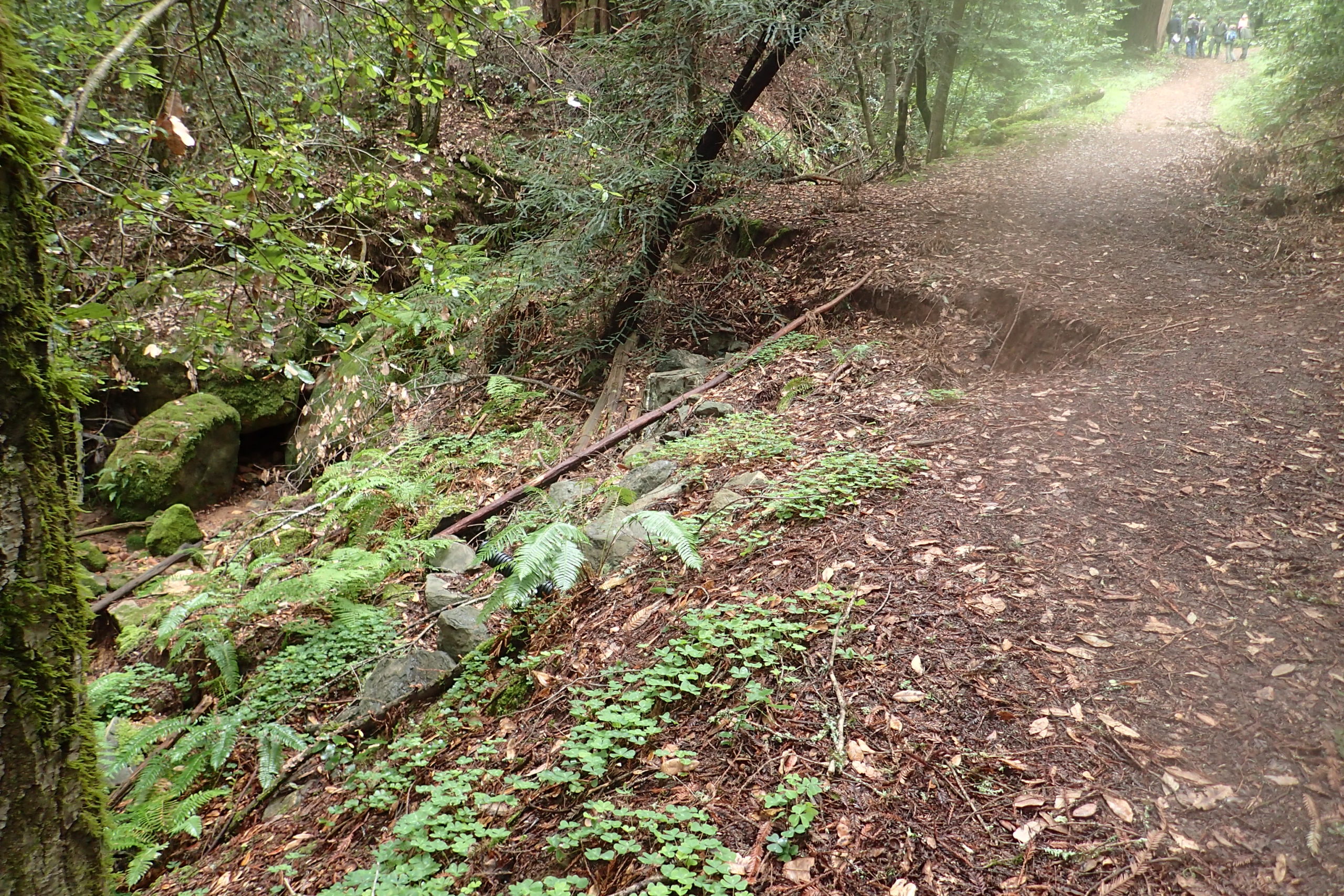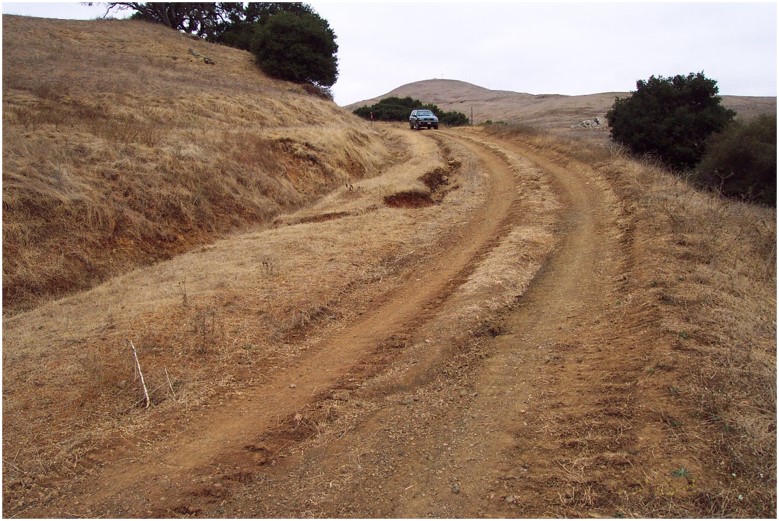Rural Roads
In Marin County, there are many miles of unsurfaced roads in regular use. Throughout northern coastal California, unsurfaced roads such as driveways, fire roads, and horse trails criss-cross the landscape and provide access to logging areas, remote ranchlands, residential homes, and more. Maintaining quality unsurfaced roads is important to the management of our working landscapes and the ecosystems they can potentially affect. When new roadways are built, standard problems can often be avoided, but established unsurfaced roads may be worn and generally exhibit common issues. When degraded, these roads are less useful, less safe, and contribute to erosion and sediment deposition into waterways which impact water quality and adversely impact aquatic species.
This page provides some excellent references for designing, constructing and maintaining safe and nondestructive small roads. We recommend that you seek experienced professional help when repairing significant road drainage problems, all culvert and bridge installation, and designing and building new roads. Work on trails and driveways where there is no risk of damaging structures, other roads, utilities, or streams, where you can accomplish your work with a shovel and your hands, and where you can check it regularly during winter, can usually be done safely by landowners. If in doubt, contact the local Petaluma Field Office at the USDA Natural Resources Conservation Service (NRCS) (707-794-1242) or the Point Reyes Station Marin RCD office (415-663-1170).
The following steps can help get an eroding unsurfaced road, driveway or trail in shape, as well as provide guidance for avoiding the same mistakes when constructing new roadways. Beyond these steps you will find photos, detailed drawings, resources and videos to help guide you.
Step 1: Evaluate, and if necessary, modify the road surface drainage. Read more...
Most road erosion and related problems, such as gullies and landslides, are due to the way runoff reacts to the road surface. Through grading, road drainage can be modified to reduce or eliminate such problems. The objective is to have the runoff travel as short a distance as possible before safely crossing the road and discharging to a well protected, non-erodible point. The longer the water travels along the road surface, the more likely it is to concentrate into rills and washouts, eventually leading to gullies.
Step 2: Create and maintain structures to transport water safely across the roadway. Read more...
Whenever there are ditches, or where streams and winter swales cross an unsurfaced road, look for erosion problems. Even a slight washout or rilled area that has to be regraded every year can contribute tens of tons of sediment to the nearest stream over a few years. One way to get a handle on how much soil has washed away from a seemingly stable road surface is to lay a flat stick or board across the road. Assuming that the road was once graded to a relatively flat surface, the ground between the stick and the current surface will show what has been lost.
All types of cross-drainage except outsloping require that the water leave the road into a well-vegetated, low-gradient ground, or protected outlet. The method(s) employed to transport flow across the road depends on how much use the road receives, the volume of flow, whether the road is regularly maintained and, of course, your budget. For example, although bridges can be costly to install, they can make up for it through savings associated with ongoing maintenance costs otherwise incurred. It is important to note that all treatment methods must be sized to handle the desired stormflows.
Step 3: Carry out an ongoing maintenance program on your road(s). Read more...
Many road erosion problems can be nipped in the bud if the road is properly and regularly maintained. Dry-season maintenance activities should include replacing energy dissipators that have washed away, cleaning culverts, replacing inadequate culverts with larger ones or another type of cross-drainage, adding additional cross-drainage if necessary, smoothing rills to prevent them from growing into gullies, modifying the surface drainage as needed and, in early fall, seeding the roadbed or adjoining areas of exposed soil with native erosion control seed mixes (Purchase native seed at Pacific Coast Seed, LeBallister’s, Hedgerow Farms, etc.). When grading the road surface, spread the scraped soil evenly over the road edge instead of forming berms which collect and channel flow. In winter, energy dissipators should be inspected and reinforced if necessary, culverts and ditches kept clean, and rill erosion checked by constructing rolling dips or waterbars. Winter is also the best time to note where changes in surface or cross-drainage are needed. As the major causes of road erosion are repaired, maintenance will become easier and our streams cleaner. To learn more about the importance of keeping our streams clean, visit the Impacts to Salmonids Quick Link in the sidebar.
